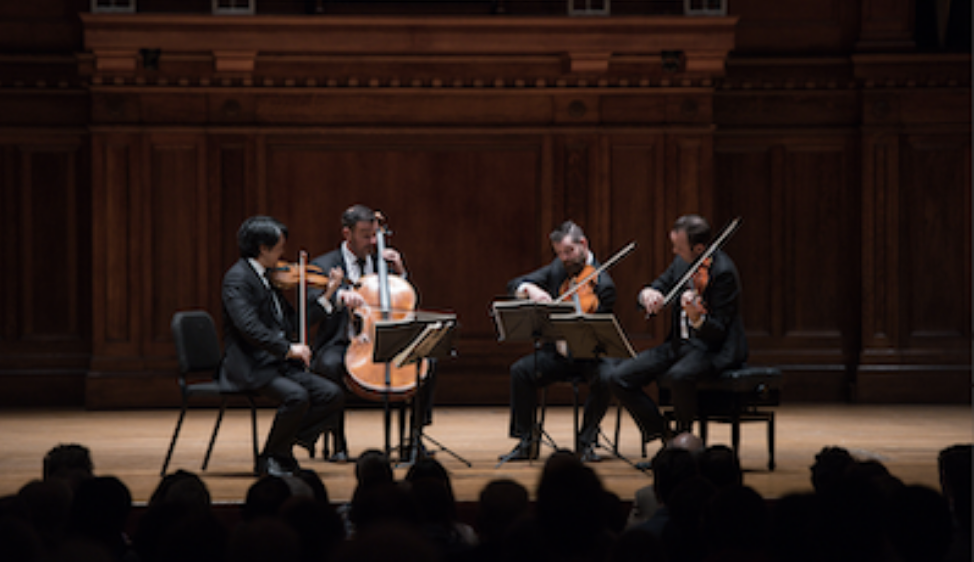

Press

By Kevin McLaughlin for clevelandclassical.com
Photo by Yevhen Gulenko
At Oberlin’s Finney Chapel on Friday evening, October 10, the Miró Quartet continued its complete Beethoven cycle and marked its thirty-year homecoming with the three “Razumovsky” quartets of Op. 59. Founded at Oberlin in 1995 by violinist Daniel Ching and cellist Joshua Gindele, the group later took its enduring form with the arrivals of second violinist William Fedkenheuer and violist John Largess.
After winning a competition hat-trick at Fischoff, Banff, and Naumburg, as well as an Avery Fisher Career Grant, the Miró found a home as Quartet-in-Residence at the University of Texas at Austin. Returning to Oberlin for this six-concert Beethoven marathon gave the evening an air that was both valedictory and self-renewing.
Beethoven’s three Razumovsky quartets, commissioned in 1806 by Count Andreas Razumovsky (the Russian ambassador in Vienna) form the first of the composer’s so-called “middle” quartets. Written soon after the Eroica Symphony, they push the string quartet toward symphonic grandeur. They also introduce two “thèmes russes” — graceful nods to their patron’s heritage that Beethoven treats more as grist for invention than gestures of diplomacy.
No. 1 in F major begins expansively, as if testing the form’s heroic limits. Daniel Ching carried the long themes of the Allegro with poise, while Joshua Gindele gave them ballast. In the second movement, a nimble scherzando, played like dining-hall repartee, Gindele’s opening one-liner drew a riposte from Ching, and in turn a snappy rejoinder from the others. In the slow molto mesto, Beethoven’s sadness felt less tragic than brave, and the concluding Allegro based on its Russian tune brought a sense of buoyant release.
In No. 2 in e minor, Beethoven adopts a more somber mood. The opening Allegro is turbulent, and the Miró responded with taut energy. The famous Molto adagio unfolded as a long meditation. Ching’s tone was muted and inward-looking, and Largess answered from the depths with a dusky, consoling voice. The Allegretto, based on its own Russian theme, was deft and slightly gloomy, a country dance glimpsed through storm clouds, and the Finale Presto galloped to the finish. The quartet played with a robust, muscular sound softened by unexpected poetry.
No. 3 in C major — the most extroverted of the set — found all four players racing toward daylight. The slow Introduzione emerged mysterious and grand, then burst into the Allegro vivace with clarity and sparkle. Gindele’s cello gave the Andante its conversational warmth, and a collective sheen in the Menuetto grazioso lent elegance and lift. The final Allegro molto was a tour de force: fast, articulate, and gleaming. It ended not with grandeur but with glee — like Oberlin students celebrating the end of fall semester.
What impressed most through all three quartets was the balance of each voice with the others, yet each contributed something distinct: Ching’s refined lyricism, Fedkenheuer’s agility, Largess’s glowing and secure middle voice, and Gindele’s anchoring sonority. No one dominated — except perhaps Ching, as he had a right to, in the final movement of No. 3.
By the end of nearly two hours, the Razumovsky cycle felt less like an academic exercise than a homecoming. The Miró, seasoned yet sounding youthful, drew applause that was sustained and sincere — a hug for prosperous sons returning home.